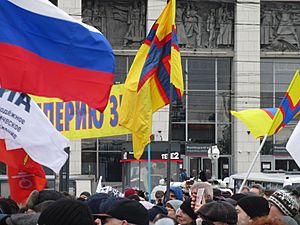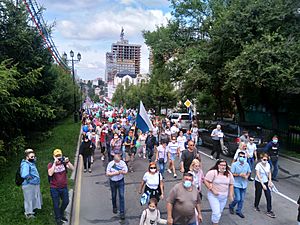Separatism in Russia facts for kids
Quick facts for kids Federal subjectsСубъекты федерации (Russian) |
|
|---|---|
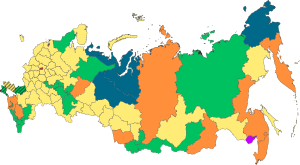
Crimea, Donbas, Kherson, and Zaporizhzhia, internationally recognized as parts of Ukraine, shown with diagonal stripes. Republics Krais (territories) Oblasts (regions) Federal cities Autonomous oblast
(autonomous region) Autonomous okrugs (autonomous areas with a substantial ethnic minority) |
|
| Number | 83 |
Separatism in Russia is when groups in certain regions of the Russian Federation want to break away to form their own country or gain more self-rule (autonomy). This idea isn't new. People tried to separate from the old Russian Empire and the Soviet Union.
Modern separatism became more common after the breakup of the Soviet Union in 1991. It was a big topic in the 1990s and early 2000s. The main reasons for these movements are feelings of unique national identity in Russia's republics, economic issues, and being far away from the central government in Moscow. In Russia, it is against the law to promote separatism.
Contents
Why Does Separatism Happen?
There are several reasons why some regions in Russia have separatist movements.
Ethnic and Cultural Identity
Russia is home to many different ethnic groups, each with its own language, culture, and history. In some republics, people feel their identity is very different from the rest of Russia.
- Turkic Identity: Some groups with Turkic backgrounds feel a connection to each other and to countries like Turkey.
- Siberian Identity: People in the huge, isolated regions of Siberia and the Far East sometimes feel they have a unique culture that deserves more self-rule.
- Finno-Ugric Identity: Groups in northern and western Russia feel connected to Finnish and Hungarian cultures. They see themselves as the original people of their lands.
Other Reasons
- Disagreements with the Government: Sometimes, local leaders and the central government in Moscow don't agree on how things should be run.
- Economic Issues: Some regions feel that their natural resources are taken to benefit Moscow, leaving them with less money for their own communities.
Movements in Northwestern Russia
The northwestern part of Russia is close to the European Union and NATO. The movements here are often inspired by their neighbors.
The Baltic Republic (Kaliningrad)
Some people in Kaliningrad Oblast, a Russian territory located between Poland and Lithuania, have proposed creating a Baltic Republic. This idea was supported by the Baltic Republican Party before it was shut down in 2005. Supporters want to celebrate the region's unique history and location.
Ingria (Saint Petersburg Area)
Ingria is a proposed state around the city of Saint Petersburg and the Leningrad Oblast. Supporters, who are often Russians unhappy with the government, feel their region has a special identity. They use a flag that represents their historical connection to the area.
Karelia
Karelian separatism has roots going back to the early 1900s. The movement wants to protect the Karelian language and culture. It is located in the Republic of Karelia, which borders Finland. Some groups want a multi-ethnic state, while others want a state focused on the Karelian ethnic identity.
Movements in the North Caucasus
The North Caucasian Federal District is a region with many different ethnic groups and a long history of conflict. Separatism here is often tied to ethnic identity and religion.
Chechnya
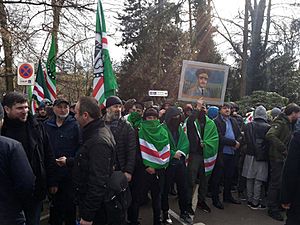
The Chechen separatist movement is one of the most well-known. It dates back to the 1800s. After the Soviet Union collapsed, the Chechen Republic of Ichkeria declared independence, which led to two wars with Russia. Today, the Ichkerian government exists in exile, and some Chechen volunteers are fighting on the side of Ukraine, hoping to one day restore their independence.
Circassia
Circassia is a proposed country for the Circassian people. Their historical lands are now split across several Russian regions, including Adygea and parts of Krasnodar Krai. Much of the support for an independent Circassia comes from the Circassian diaspora (Circassians living outside their homeland). They work to keep their culture alive and remember their history.
Dagestan
Dagestan separatism is complex because the republic is home to many different ethnic groups. Some people want a single, united Dagestan, while others want smaller, separate states for each ethnic group, like Avars, Lezgins, and others.
Movements in the Volga Region
The Volga Federal District is another ethnically diverse area. Many of the republics here have movements that want to preserve their unique cultures and languages.
Tatarstan
Tatar separatism was very strong in the 1990s. In 1990, Tatarstan declared it was a sovereign (self-ruling) state. In a 1992 referendum, a majority of voters supported full independence. For many years, Tatarstan had a special agreement with Russia that gave it more autonomy. This agreement ended in 2017. Many people see Tatarstan as a leader for other separatist movements in Russia.
Bashkortostan
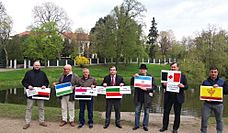
Bashkir separatism in the republic of Bashkortostan grew in the 1990s, inspired by its neighbor, Tatarstan. Supporters want to protect their culture and environment. In 2020, separatists joined protests to protect the Kushtau mountain, a natural landmark.
Idel-Ural
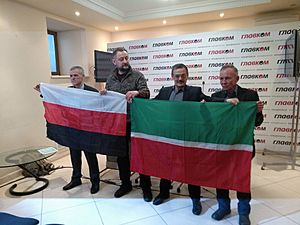
The idea of a unified Idel-Ural state combines several republics in the Volga region, including Tatarstan, Bashkortostan, and others. The main group promoting this idea is the Free Idel-Ural movement, which was started in 2018 in Kyiv, Ukraine. They want to create a federal state where different ethnic groups can live together.
Movements in Siberia and the Far East
Siberia is a vast and resource-rich land. Separatism here is often driven by economic concerns and a feeling of being different from European Russia.
Siberia
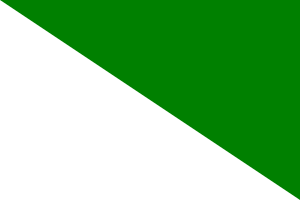
Siberian separatism argues that Siberia is a unique place and should have more control over its own affairs. The movement became popular in 2014 with the "March for the Federalization of Siberia." A famous slogan from this movement is "Stop feeding Moscow!", which is now used by other separatists across Russia. They feel that the region's wealth from oil, gas, and minerals benefits the central government more than the local people.
Far Eastern Republic
Some people in Russia's Far East want to bring back the Far Eastern Republic, a country that existed briefly from 1920 to 1922. This movement is also driven by economic issues and the great distance from Moscow. In 2020, large protests in the city of Khabarovsk showed that many people in the region were unhappy with the central government.
Sakha (Yakutia)
Yakut separatism in the Sakha Republic is mainly about economic control. The region is rich in diamonds and other resources, but many feel the profits go to Moscow. There is also a movement to revive the traditional Yakut religion, Tengrianism, as part of their unique cultural identity.
Foreign Support
The Russian government often says that foreign countries are the main cause of separatism. However, besides Ukraine, no country has officially supported these movements.
Ukraine has openly supported some separatist groups since 2014. It is the only country to recognize the independence of the Chechen Republic of Ichkeria. Ukraine has also allowed volunteer battalions made up of people from different Russian ethnic groups to form and fight alongside its army.
See also
 In Spanish: Separatismo en Rusia para niños
In Spanish: Separatismo en Rusia para niños
- Free Nations of Post-Russia Forum
- Proposed federal subjects of Russia
- Dissolution of Soviet Union
- List of active separatist movements in Europe


